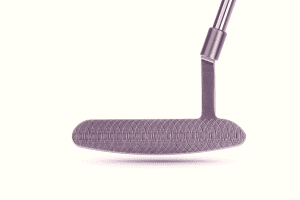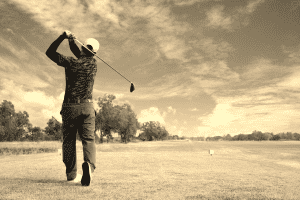Deciding which tees you should play from is a crucial part of setting yourself up for a success out on the course. Tee box selection is about matching the golf course’s difficulty with your current skill level and playing ability. Playing from the correct tees will set you up for a round that is more fun, and often times will help you shoot a lower score.
Understanding the different tee box colors and their purpose is the first step in choosing where to tee off. For a long time, it was the consensus that different tee colors suggested matching gender, age, or experience to a specific color. More recently the game has been encouraging players to look at the length of the course from specific tees and how it aligns with your average driving distance. Acknowledging your true skill level and typical driving distance can guide you to the most appropriate tee box, making the game more fun for you and your group.
Choosing the right tees doesn’t need to be complicated- most courses tend to use your handicap as a guide for which tees to use. There’s also a simple formula you can use as a rule of thumb for typical course length, based off how far you hit your 5 iron.
The key is to provide yourself with the right level of challenge—enough to keep the round engaging, but not so difficult that every hole becomes daunting while you stand on the tee box.

Standard Tee Box Color System Explained
Red Tees: Usually the forward-most set, often used by beginners, junior players, women, or those with higher handicaps. They provide the shortest distance to the green. These are often referred to as the women’s tees, but they’re best suited for golfers who cannot hit the ball very far.
White Tees: A step up in difficulty from the reds, the white tees are considered the standard tee box choice for casual male players. They offer a nice middle ground for distance and challenge. If you’re a weekend player who loves to play but isn’t a bomber, these probably make the most sense.
Blue Tees: For more experienced golfers, the blue tees lengthen the course and require a stronger command of your drives and approach shots. Most courses will suggest golfers playing from the blue tees to have single digit handicaps. You typically will want to have an average driver distance over 250 yards for the blues to make sense for your game.
Black Tees: Also known as “championship tees,” these are typically the farthest back and set the stage for the most challenging level of play, suited for low-handicappers and professional players. These tees attract golfers who have handicaps below 5, often catering to golfers who can shoot level par or better on any given day.
Some courses may have additional colors, such as gold or green tees, to provide an even wider range of options and complexities. Typically, gold tees will be a designated tee box for senior golfers, and green will be the tee box for juniors.
Course Rating and Slope
The course rating is a number, usually between 67 and 77, that estimates the average score of a scratch golfer for a set of tees. The slope rating, on the other hand, measures the difficulty of a course for bogey golfers relative to scratch golfers; it ranges from 55 to 155, with a standard of 113. These numbers are useful in figuring out which tees make sense for your skill level. The higher these numbers are, the more challenging the golf course will be from those tees.
You can usually find the course rating and slope on the scorecard provided for your round. They’re another set of metrics to consider, especially if you’re playing a course for the first time or are unfamiliar with the layout.

Assessing Your Skill Level and Distance
When deciding which tee box to play from, your golf handicap and average driving distance are two main factors to consider. These indicators will help you select the best set of tees when you go out and play a round of golf.
Golf Handicap
Your golf handicap is a numerical measure of your potential playing ability. It’s calculated based on your recent rounds and represents how many strokes over par you could be expected to play. This number helps you select the right tees because it aligns with your overall skill level. If your handicap is high, you will benefit from playing shorter tees, while lower handicap golfers often opt for longer tees.
If you’re a high handicap, above 20+, you should be considering the white or forward tees. As a mid handicap, somewhere between 10-20, as a rule of thumb the whites/members tees are typically going to be your go to. Below a 10 handicap, it will usually make sense to explore the blues, or even the championship tees.
Average Distances to Consider
Your average driving distance is another key piece of the puzzle. Knowing how far you typically hit the ball can prevent you from biting off more than you can chew. A widely-accepted method is the iron distance formula, which involves multiplying the distance you hit a specific club – often a 5-iron – by a set number. If your average 5-iron shot is 150 yards, then playing from tees with a total yardage around 5,400 might be your sweet spot.
| Average 5-iron Distance (Yards) | Ideal Course Yardage For You (Yards) |
| 100 | 3600 |
| 110 | 3960 |
| 120 | 4320 |
| 130 | 4680 |
| 140 | 5040 |
| 150 | 5400 |
| 160 | 5760 |
| 170 | 6120 |
| 180 | 6480 |
| 190 | 6840 |
| 200 | 7200 |
If you’re unsure of your driving distance, track your shots over several rounds and compute an average. Most of the times, golfers will find they do not hit the ball as far as they think. While many players think they can hit it 300 yards, the reality is those drives might be in the 230-240 range.
Here’s a quick breakdown of how to measure driving distance vs course length:
| Average Driver Distance (Total) | Ideal Course Length |
| 300 yards | 7,150 – 7,400 yards |
| 275 yards | 6,700 – 6,900 yards |
| 250 yards | 6,200 – 6,400 yards |
| 225 yards | 5,800 – 6,000 yards |
| 200 yards | 5,200 – 5,400 yards |
| 175 yards | 4,400 – 4,600 yards |
| 150 yards | 3,500 – 3,700 yards |
| 125 yards | 2,800 – 3,000 yards |
| 100 yards | 2,100 – 2,300 yards |
Selecting the Right Tees
Between understanding your handicap and your typical driving distance, you now should have a good idea on how to select the right tees for your game. If you’re looking for extra challenge one day, move back a tee box from where you normally play. If you want a chance to go lower than usual, move up one tee box.
Benefits of Appropriate Tee Placement
Playing from the right tees can:
- Make the round more fun: The right tee box should give you appropriate approaches into each hole. Nobody wants 240 in on a par 4.
- Improve Pace of Play: You’ll be hitting from better positions more frequently, and ultimately it’ll speed up your pace.
If you want more pars and birdies when you hit the course, select the optimal tee box for your skill level. Hit ’em well!









